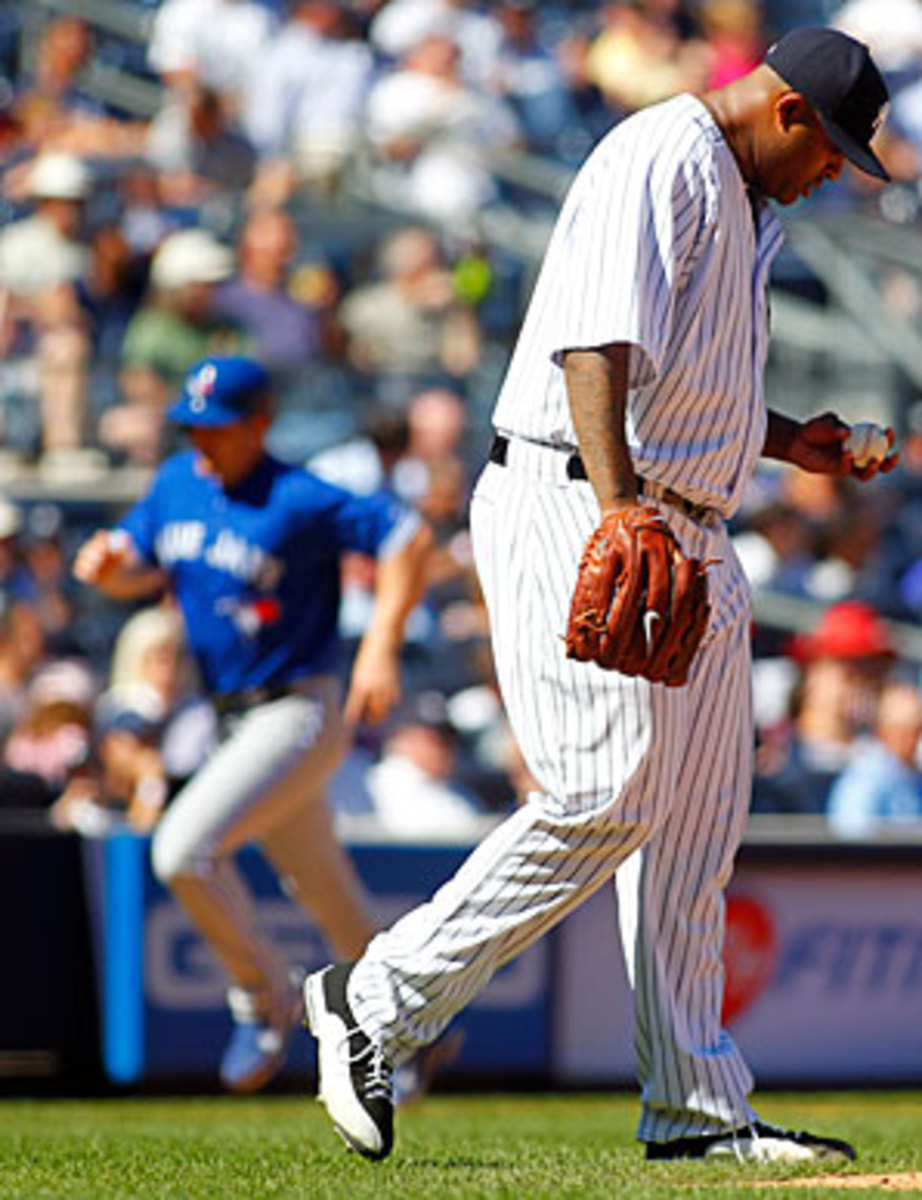Biggest question for Yankees: What will they get from Sabathia?
Phil Hughes has his swing-and-miss fastball back. Ivan Nova makes his first start tomorrow since Aug. 21. A confident Andy Pettitte gets the ball Tuesday for the first time since breaking his left fibula June 27, saying, "I expect my command to be there." The Yankees have won two straight games for the first time in 26 games. They have the easiest schedule down the stretch among AL East contenders. But the road to October for New York doesn't truly begin to open up until they see how CC Sabathia throws the ball tonight against Tampa Bay.
Sabathia is the single most important factor for the Yankees' chances of playing deep into October because their reliable horse is now a question. He has not been bringing ace stuff to the mound. In his last three starts, all New York losses, Sabathia has allowed 13 runs (10 earned) and 25 hits in 20 1/3 innings. His pitches don't have the same velocity or bite.
The Yankees insist Sabathia, 32, is healthy and that none of the recent tests on his elbow provided concern. But privately they wonder if simply the wear and tear of about 2,600 innings and 40,000 pitches over 12 years, including six postseasons, is catching up to him, just as the miles caught up to Roy Halladay this year. "One thing you know about CC is that even without his best stuff he can will his way through a game," one Yankees source said. "He's a great competitor."
The Yankees may be turning a corner, but they still have their worries. They have played losing baseball for the equivalent of a third of the season (26-28 in their last 54 games). Shortstop Derek Jeter has been playing on a one good ankle for the past week and a half, and the bad one (he has a bone bruise on his left ankle) has grown worse. They are a poor situational hitting team, and no one is sure if Mark Teixeira (strained calf) will be back this month.
But nothing makes a team feel good about itself like its ace going out to the mound with dominant stuff. The flip side is the mental drain of watching an ace get knocked around. Which Sabathia do the Yankees have down the stretch? The answer may hold the key to their championship hopes.
Until they stumbled in Anaheim on Thursday, the Oakland Athletics played the equivalent of half a season on a 112-win pace (56-25). The amazing part of the story is that they are winning consistently on the road and down the stretch of a pennant race with the youngest pitching staff in the league. The entire rotation is 25-and-under: Jarrod Parker, 23, Tommy Milone, 25, Brett Anderson, 24, Daniel Straily, 23, and A.J. Griffin, 24. No team in the league has had more starts from 25-and-under pitchers (84), more wins (48), more innings (668 1/3) or a better ERA (3.50).
None of the starters seem to be wearing down in the sixth month. If there is one pitcher to keep a wary eye on it would be Parker, who already has gone 38 2/3 innings beyond his professional high. Parker is just four months younger than Stephen Strasburg. But Parker has a 1.93 ERA in his two September outings so far.
Tonight begins a season-defining stretch for the young Oakland pitchers. They get Baltimore at home for three games before a 10-game trip to Detroit, New York and Texas. It may sound like an imposing task, but this young staff, with no signs of fatigue, has been meeting every challenge.
Enjoy these pennant races while you can, because you're not going to like the next ones so much. The release of the 2013 schedule highlights the greatest problem with moving to six divisions of five teams each: interleague play all year long. September especially is going to get weirder, not more dramatic, because of the awkward problems of nonsensical matchups and AL pitchers batting in a pennant race.
Imagine the Tigers in another battle with the White Sox for the AL Central title and in the final weekend of the season Detroit goes to . . . Miami? Tigers-Marlins to end the season? Really? Now Justin Verlander, who hasn't batted in two months, has to bat and possibly run the bases.
If you thought interleague play was losing its luster, you won't like the new format. And poor AL managers will have to continually adapt to the awkwardness of playing under NL rules, which requires DHs to sit and pitchers to bat. Here's an example: the Mariners play in NL parks in May, July and September. Do they have their pitchers hit all year? Just a week or so before those games?
The owners and players wanted a schedule with easier travel and equanimity in the size of divisions. The cost of it is even more awkwardness from interleague play.






